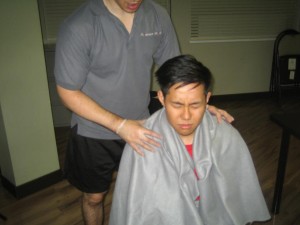The management of pain caused by burns is difficult to deal with since burns vary in terms of type and severity. Burns are categorized in three types – first degree, second degree and third degree.
First degree burns cause mild injury with pain and reddening of the exterior layer of the skin. For a second degree burn, it affects both the epidermis and dermis causing pain, swelling, and redness and blistering. As for third degree cases, it involves all the skin layers and the deep tissues causing white, blackened or charred skin that can get numb.
Causes of burns
There are many causes of burns such as wet heat, dry heat, friction, and radiation, UV rays of the sun, electricity and chemicals. The most common are thermal burns which occur when an individual is exposed to flames, scalding liquids, hot metals or steam. These are likely to occur during vehicular accidents, house fires, electrical problems and accidents in the kitchen.
Symptoms of burns

The symptoms usually depend on the cause and the type of burn sustained by the individual.
- Blisters
- Pain
- Reddened skin
- Peeling skin
- Swelling
- White or charred skin
- Shock
It is important that you know how to handle these injuries in order to prevent further damage. With this in mind, you can enroll in a first aid class so that you know what to do in case a family member sustains a burn.
Treatment for burns
The treatment for burns depends on the type of burn sustained. For first degree cases, they are usually treated by applying skin care products such as antibiotic ointments and aloe vera creams. For the pain caused by the injury, you can provide over-the-counter medications for pain such as acetaminophen.
For second degree burns, they can be treated by applying an antibiotic cream or those that are prescribed by a doctor. As for third degree burns, it would require medical care and the doctor will recommend skin grafting or the use of synthetic skin. Take note that severe burns that cover large areas of the body require intensive treatments such as the administration of IV antibiotics in order to prevent infection as well as IV fluids to replace the fluids lost through the burn.
Management of pain caused by burns
Always remember that the pain caused by burns can be intense and can last for a long time. The pain is difficult to control due to its distinct characteristics, changing patterns and other various factors. Additionally, there is pain involved in the treatment of burns since the wounds must be cleaned properly and dressings are changed in order to check the condition as well as monitor for signs of infection. Based on studies, it revealed that aggressive treatments for pain are required for severe cases of burns.
